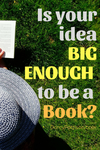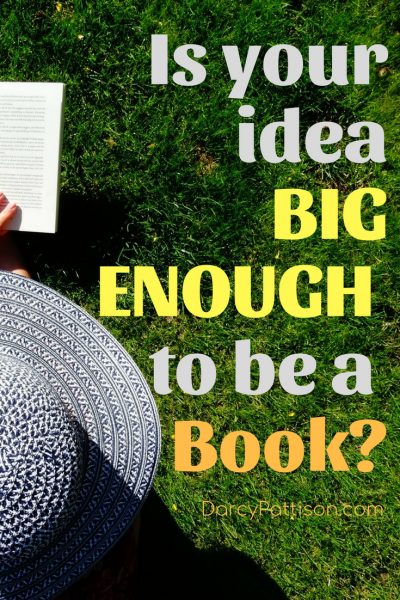
Big ideas: Why a children’s BOOK? In this post, I’m emphasizing the question of why create a BOOK?
When you have an idea about something you want to tell children, you have many options for communicating that information or story. You could create a video, have a conversation with your grandchild, write a magazine piece, write an editorial letter to the local newspaper, write a letter, draw a single picture, create a greeting card, or any number of other things. Depending on the information/story, you might sew a teddy bear, build a swing set, or ask a kid to help you cook.
WHY a BOOK? Books Need Big Ideas
If you think about media, a radio report lasts for a day or so. A daily newspaper lasts for a day. Magazines take a longer look and they can last a month or so. Of course, all these can be archived, but their intent is short-term. The analysis, the detail, the emotions – everything is meant for short term consumption.
The book, however, is our society’s archival medium. Books take the long view. They analyze something in depth, and from a broader perspective. Fictional books present deeper emotions, broader truths, and bigger canvases.
So, I ask you: why a children’s book? 
Questions to Ask Before You Publish a Children’s Book: Is this a Big Idea? Does your idea have lasting qualities? Does the idea have big emotions? Does the idea have broader truths? Does the idea have the possibility of amazing aesthetics? Does the idea have a wider reach than a single person or family?
Now here’s a contradiction: It’s an odd thing in literature, but if you try to be generic and appeal to EveryMan, you’ll apply to NoOne! But if you write something specific–one unique character, in a unique, specific setting, with a personally overwhelming problem–then you’ll appeal to everyone. Because humans are humans are humans. But if you write EveryMan, it’ll go no where.
It’s a tension that we deal with when we write books: big ideas are specific and yet, universal.
Why a Children’s Book: Examples of Not-So-Big-Ideas
Should this be a children’s picture book or not?
Learning to brush your teeth correctly. A walk in my neighborhood. Listening to a piece of music.
And of course, it’s not an easy question. Each of those COULD be a children’s picture book (and you’ll likely leave me an example of that in the comments!). But only if they are done in a way that makes them bigger and more universal than the kernel idea. They aren’t big ideas at first glance.
Learning to brush teeth might be most appropriate as a video, a brochure, a one-on-one with a child, or a visit to the dentist. To make it something that our society should archive in a book, you’d need to widen the emotional impact of the story some way.
A walk in my neighborhood could be a boring book. Or it could be a fascinating look at how people live in a specific area. A walk around a village in Papua New Guinea would be vastly different than a walk around the neighborhood in Manhattan. The point would be how to make either or both of them universal in some way. Or, how to celebrate the uniqueness. For a concept book like this, language play can help elevate the story because the way you say something–your voice–could be something worth archiving. Shakespeare is archived for that very reason: his writer’s voice expressed common truths in a way that elevates them.
Listening to a piece of music is such an abstract concept, which is the other problem with ideas for children’s books. Children need concrete ways to understand abstract ideas. It’s also a question of emotions translating to the written/illustrated medium. Music evokes emotions and expresses emotions. That’s why music is the sound-track for movies. That means it’s also hard to translate to words. Instead, why not listen to a piece of music with a kid? You might talk about how it makes you feel, but you might not.
I also know that sometimes the idea develops as you write and becomes bigger. The sum of the parts–idea, writing, and art–becomes gestalt, where the sum of the parts of bigger than it should be.
Still.
Not every idea is worthy to be a book.
The post Big Ideas: Why a Children’s BOOK? appeared first on Fiction Notes.
Read more: darcypattison.com
